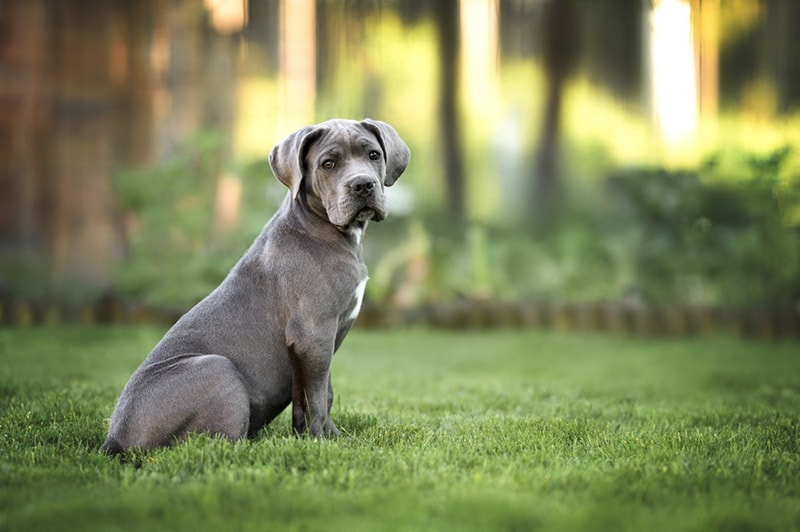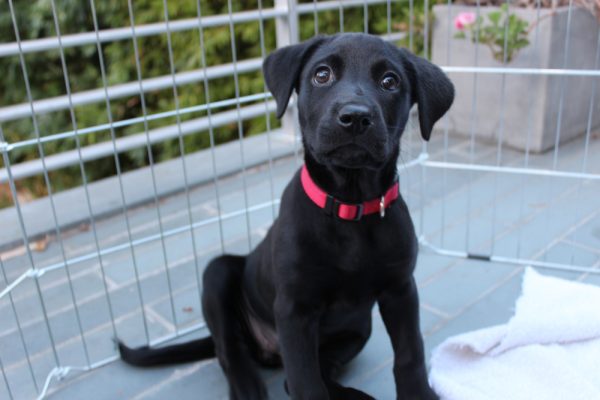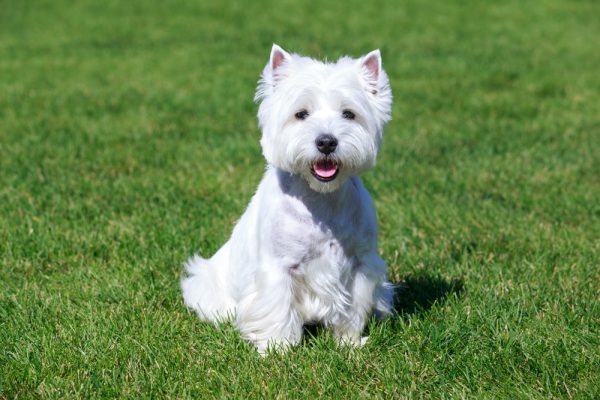If you want to introduce a Cane Corso to your family, the Blue Brindle is a beautiful option. These dogs are gray, and they have brindling or small white patches. The Cane Corso is a fiercely loyal dog, and you will always feel safe with this striking giant by your side. So, whether you’re here because you’re thinking of getting one or you’re just curious to know a little more about it, we have you covered.
Breed Overview
Height:
23.5–27.5 inches
Weight:
85–110 pounds
Lifespan:
9–12 years
Colors:
Black, black brindle, brindle, fawn, grey and gray brindle
Suitable for:
Experienced, active owners, families with older children
Temperament:
Loyal, affectionate, intelligent, easy to train, willful, assertive
The Cane Corso is a powerful, headstrong dog not for a faint-hearted owner. They need clear boundaries and lots of time and patience for the correct training and socialization. Outside of its unique color, the Blue Brindle Cane Corso is identical to other types of Corso except for their lifespan—it is thought that the darker the coat color, the longer your Cane Corso will live.
Blue Brindle Cane Corso Breed Characteristics

The Earliest Records of Blue Brindle Cane Corso in History
The Cane Corso can be traced back to ancient times in Italy, and its name is derived from the Italian word “cane” for dog and the Latin term “cohors” which means “guardian” or “protector.”
The now-extinct Greek Molossus dog, which was a mastiff-type canine, is an ancestor of the Cane Corso. They were then later bred to be fighting dogs in England, where they became the Roman “pugnaces,” which were a category of dogs used to attack wild animals.
The Cane Corso is a working dog through and through—they fought alongside Roman legions, hunted game like wild boar, and guarded property, flocks, and people on farms.

How the Blue Brindle Cane Corso Gained Popularity
The Cane Corso is known for being loyal with a powerful instinct to protect their families. They might look intimidating and have a reputation for being aggressive, but this can be linked back to irresponsible owners.
They are incredibly intelligent, which makes them easy to train, and if they are trained and socialized early enough, they can get along with older children and other pets.
There was a decline in the Cane Corso after World Wars I and II, but a few dogs still existed. During the 1970s, Cane Corso enthusiasts sparked a revival, and the first dogs arrived in the United States in 1988.
The color dilution to create the color gray is recessive, so it is pretty unusual for dogs to find the right breeding partners at random for such a mix, which is where breeders come in. However, blue brindle is not rare and is generally easy to source.
Formal Recognition of the Blue Brindle Cane Corso
The Cane Corso isn’t popular in all parts of the world. In the UK, for example, they’re quite rare and haven’t been recognized by the UK Kennel Club. As a much more popular breed in the States, it was recognized by the American Kennel Club (AKC) in 2010.
The Blue Brindle Cane Corso is recognized by the AKC, although it is officially referred to as the Gray Brindle Cane Corso.

Top 5 Unique Facts About the Blue Brindle Cane Corso
There are plenty of interesting, unique facts about the Cane Corso out there to find, but we picked our top five for you!
1. The Cane Corso Is a Massive Dog
They can stand nearly 28 inches at the shoulder and weigh more than 110 pounds. But they’re also intimidating looking, thanks to their large head, serious expression, and muscled body. They are dominant and protective of those they love—you definitely wouldn’t want to be on the wrong side of them.

2. The Plural Form Is Cani Corsi
If you have more than one of these dogs, you have Cani Corsi.
3. They’re Loyal, & They Understand You
The Cane Corso is sensitive to your mood and feelings while being indifferent to other humans or animals that aren’t their family.
4. The Cane Corso Can Talk
Well, sort of, but they do vocalize their thoughts. Expect to hear howls, snuffles, snorts, a “roo-roo” sound, and something between singing and barking.
5. They Will Be a Very Big Shadow
Your Cane Corso is happiest when it is with you. They thrive on companionship, so don’t ever expect to be alone again!

Does the Blue Brindle Cane Corso Make a Good Pet?
The Cane Corso is a good family pet but won’t fit in with all families. They’re best suited for active owners with older children. They do well with other pets if they’ve been socialized and trained early, but like with young children, they could hurt a small pet because of their size, so they should be supervised.
Ongoing training and socialization are important for this breed and should be started as soon as possible. It is critical that you make sure they know who is the boss as the Cane Corso will push the boundaries, and it is not a suitable pet for first-time owners.

Summing Up
The Cane Corso has a long history with humans, and it is clear why; they are loyal, fiercely protective, affectionate dogs that love nothing more than being with their families. They are best suited to families that can handle their big personalities, and rest assured their reputation for being aggressive is not deserved. One thing is for certain if you’re looking for one of these breeds to join your family, the Blue Brindle Cane Corso will make a beautiful addition.
Featured Image Credit: otsphoto, Shutterstock



















